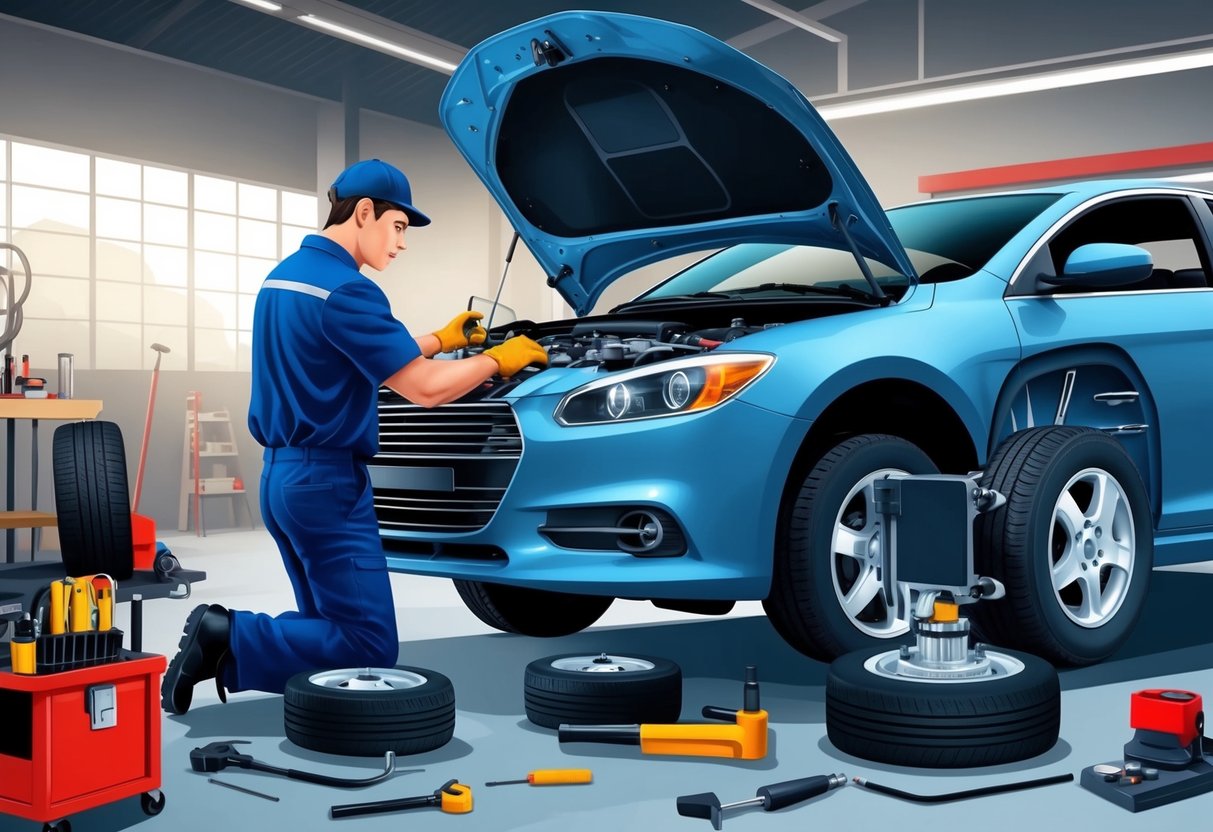
Consistent preventative maintenance is the most effective way to prevent costly car repairs and keep vehicles running smoothly for years to come.
Many drivers underestimate the importance of routine car maintenance, delaying essential tasks like oil changes, fluid checks, and tire inspections. This can lead to unexpected breakdowns, expensive repairs, and reduced vehicle lifespan.
By following expert-backed car maintenance tips, drivers can address small issues early and significantly reduce the likelihood of major problems. Simple actions such as regularly checking oil and coolant levels, monitoring tire pressure and tread, and keeping lights in working order are fundamental tasks recommended by trustworthy sources like Bridgestone’s car maintenance checklist.
Prioritizing preventative vehicle maintenance means fewer surprises at the mechanic and improved safety. This leads to greater confidence on the road for everyone.
Essential Routine Maintenance Practices
Consistent car care lowers the risk of unexpected breakdowns and helps vehicles retain their reliability and value. By sticking to proven maintenance methods, drivers can extend the life of their car.
Establishing a Maintenance Program
A maintenance program is a structured plan outlining when and how different checks and services should be completed. Setting dates for oil changes, fluid checks, and inspections reduces the chance of missing key upkeep tasks.
Following manufacturer recommendations and a regular schedule based on mileage or time helps catch wear and tear early. Keeping track of service visits and repairs—such as brake inspections, battery health, and tire rotations—helps drivers stay ahead of problems.
Using reminders, whether in a manual log or a maintenance app, ensures nothing gets overlooked. Sticking to a preventive maintenance program, as advised by organizations like the Car Care Council, is essential for minimizing costly surprises.
Following a Maintenance Checklist
Using a comprehensive maintenance checklist guarantees important steps are not missed. Key tasks include changing engine oil, replacing air filters, rotating tires, inspecting brakes, and topping off fluids such as coolant and transmission fluid.
Regularly checking lights and windshield wipers may seem minor, but these contribute to vehicle safety and functionality. A reliable checklist is often available through trusted industry resources.
Referencing a detailed maintenance guide simplifies tracking everything from tire condition to battery voltage. Consistency with these routine maintenance checks helps spot issues before they become expensive repairs.
Importance of Regular Oil Changes
Routine oil changes are one of the most critical tasks for extending engine life and maintaining peak performance. Using the right engine oil and replacing both oil and filters at proper intervals help minimize engine wear, prevent sludge buildup, and avoid costly car repairs.
Choosing the Right Engine Oil
Selecting the correct engine oil type protects the motor and ensures efficient lubrication. Factors like vehicle make, engine age, and driving conditions influence whether conventional, synthetic, or high-mileage oil is appropriate.
Always check the owner’s manual or consult a professional for the recommended oil viscosity.
Benefits of using the right engine oil:
- Reduces engine friction
- Improves fuel efficiency
- Prevents overheating
- Protects against sludge and corrosion
Using low-quality or incorrect oils increases the risk of breakdowns and poor performance. Regular oil changes with manufacturer-approved products are essential for engine efficiency and longevity.
Changing Oils and Filters
Changing both the oil and filters at recommended intervals keeps the engine well-lubricated and clean. Oil filters trap dirt, debris, and contaminants that can destroy sensitive engine parts if left unchecked.
Ignoring filter changes can lead to increased friction, loss of power, and eventual engine failure.
Key points for timely changes:
- Most cars require oil and filter replacements every 3,000–7,500 miles, depending on driving habits and manufacturer advice.
- Newer engines and synthetic oils may allow for longer intervals, but regular checks prevent overlooked issues.
Keeping fresh oil and clean filters helps engines run smoothly, reducing wear and tear.
Monitoring and Replacing Fluids
Proper vehicle maintenance requires careful attention to all fluid levels. Neglecting essential fluids like transmission fluid and coolant can lead to expensive repairs and reduce the lifespan of key components.
Checking Transmission Fluid
Transmission fluid lubricates moving parts, cools internal systems, and ensures smooth shifting. Low or dirty transmission fluid can lead to difficult gear changes and possible transmission failure.
Most vehicles have a transmission dipstick, typically labeled and located near the engine bay, for easy checking. To check the fluid, start the car and let it reach operating temperature.
Shift through each gear and return to park or neutral with the engine running. Pull out the dipstick, wipe it clean, reinsert it fully, then remove again to read the level and inspect the condition.
Proper fluid should look bright red or pink and be free of debris or burnt odor. Topping off or changing the transmission fluid at regular service intervals, as recommended by the manufacturer, is crucial.
Ignoring fluid changes can result in transmission wear, gear slippage, or costly repair bills. Regular fluid checks are especially important for older vehicles or those used for heavy-duty driving.